Hoysala temples: An umbrella of 100 creations by the Hoysala empire
The Hoysalas ruled Karnataka from the 11th to 13th centuries & loved and respected all kinds of arts, literature, and religion
Total Views |
There is no doubt in the fact that the Hoysala temples are some of the greatest gifts which history has given us, with their humble elegance and unmatched architecture. Each Hoysala temple is etched with history itself, and each of the temples have a distinct story to it. The Hoysalas ruled Karnataka from the 11th to 13th centuries. They loved and respected all kinds of arts, literature, and religion. They are known for their excellent temple architecture. Some of the prominent places where these temples were built were Belur, Halebidu, and Somnathpura.
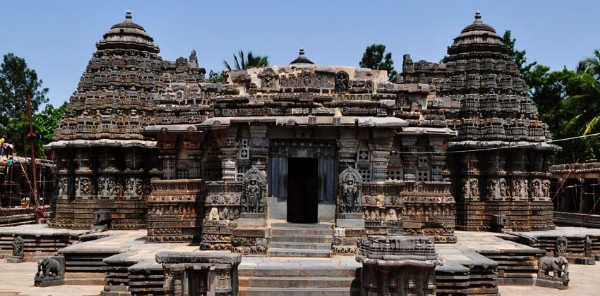
Kedareshwara temple, Halebidu | This is a Shaiva temple, and is located a kilometre away from the famous Hoysaleshwara temple. It has the simple pattern of the Hoysala temples, having 3 shrines which connect to a central hall and is built on a raised platform.
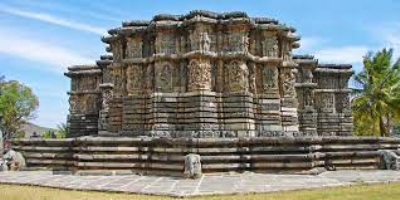
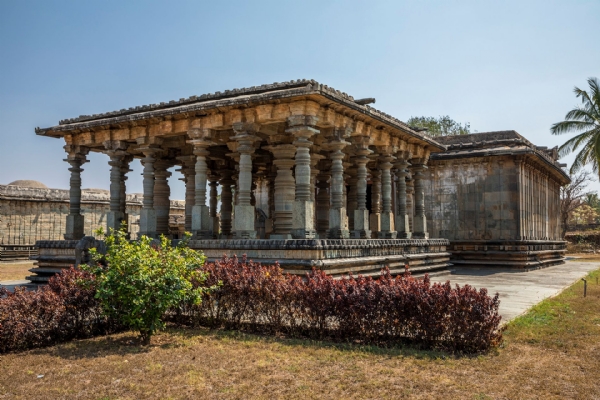
Steps leading to the raised Jagati has two beautifully sculpted elephants on either side of it. It is an Ekakuta temple with only one shikhara. The garbhagriha has a big Shiva Linga connected to Sukanasi and Navranga mandapa with a raised circular platform is in the centre called Darshana mandap.
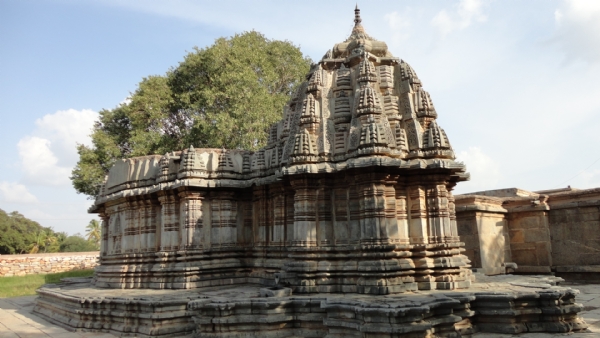
The delicate carvings of the Hoysala period can still be seen on the pillars. The Bhairava is a fierce manifestation of Lord Shiva, hence, this is a Shiva temple.
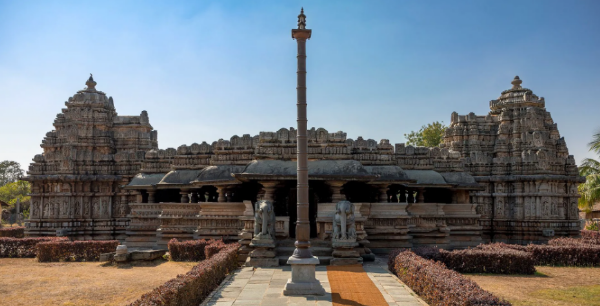
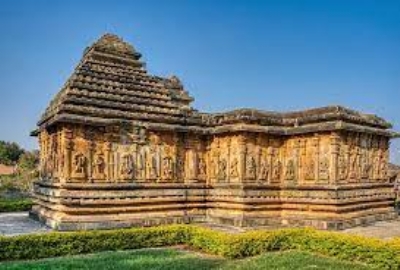

Recently, the Hoysala Temples of Belur, Halebidu and Somnathapura have been finalised as India’s nomination for World Heritage List for the year 2022-2023! This is a matter of great pride not just to Karnataka, but the entire country.
There are around 100 Hoysala-era temples spread across the state. The majority of them are located in Hassan, Mysore, and Mandya districts, and were built with outstanding excellence.
Incredible Architecture, beyond words.
— Raghu (@IndiaTales7) January 25, 2022
It’s impossible to recreate this engineering marvel even with latest technology.
Every Hoysala Temple is a Museum by itself ! https://t.co/CGs3ouEVfB
But before we dive into the actual temples, let us know a little about the architecture of them. The gracefully decorated shrines were built with a simple floor plan. The simplest of these temples have only two portions – the garbhagriha (sanctum), and a large hall outside the shrine. Some of the temples do come with more complex plans. Let us explore a few of them:
Kedareshwara temple, Halebidu | This is a Shaiva temple, and is located a kilometre away from the famous Hoysaleshwara temple. It has the simple pattern of the Hoysala temples, having 3 shrines which connect to a central hall and is built on a raised platform.
The exterior of it has intricate carvings. The magnificence of the temple was lost in a restoration attempt more than a century ago. Dutch author Gerard Foekema had documented the Hoysala archirecture. He wrote that those who admire figure sculpture can spend hours here.

Digambar Jain temples, Halebidu | The Jain temples of the Hoysala time period were simpler than the Hindu ones. These temple complex in Halebidu have 3 temples, which are dedicated to Parshvanatha, Shantinatha, and Adinatha. The two larger temples of Parshvanatha and Shantinatha have an ardhamandapa or a ‘half hall’ and a mahamandapa or ‘Large hall’. The smaller Adinatha only has a garbhagriha and a hall.
Also Read | Adalaj Ni Vav: 15th century architecture, an example of sheer brilliance of Indian engineers & architects
The temples contain beautiful lathe-turned pillars inside, which have intricate carvings. The roofs too, have carvings which are mesmerising. The Shantinatha temple also has a mirror-like sheen to it, which is quite breathe taking to see. There is a large statue of a Jain Tirthankara inside each of the temples. Even in the heat of Karnataka, these temples remain cool all along.

Sadashiva Temple, Nuggehalli | The temple was built by Bommanna Dandanayaka. Nuggehalli was a flourishing Agrahara, a centre of learning. The temple is an architectural masterpiece of the Hoysalas. The Mahadwara bordered by 2 dwarapalas leads to a pillared hall.
Steps leading to the raised Jagati has two beautifully sculpted elephants on either side of it. It is an Ekakuta temple with only one shikhara. The garbhagriha has a big Shiva Linga connected to Sukanasi and Navranga mandapa with a raised circular platform is in the centre called Darshana mandap.

Bhairava temple, Pushpagiri | Pushpagiri happens to be small hill town and is surrounded by farmlands and forests on all sides. This temple is situated within a small courtyard. Unfortunately, the exterior of the temple has been completely modernized by being painted over and placing iron railings. On the bright side, the interiors of it have been left untouched for the most part. Inside the temple is simple, with a hall and a single shrine.
The delicate carvings of the Hoysala period can still be seen on the pillars. The Bhairava is a fierce manifestation of Lord Shiva, hence, this is a Shiva temple.

Chennakesava Temple, Arakere | This temple is much plainer when compared to most other Hoysala temples, but the shrine here is the definition of beauty. This is a trikut temple, built in the 13th century. The 3 shrines contain Vishnu as Chennakesava in the west, Venugopal in the south, and Lakshmi-Narasimha in north.

To the left of the entrance is a huge stone slab with writing in ancient Kannada with details of the construction of the temple. There is also a single Shikara above the western shrine. The walls on the outside have representations of Lord Vishnu along with some sculptures and tall, slender pillars alongside.


